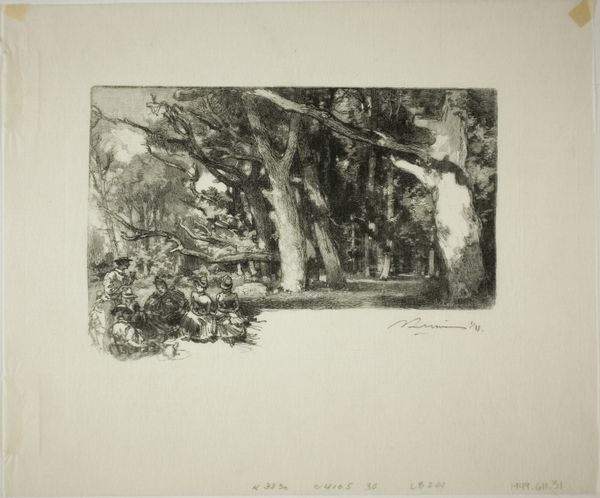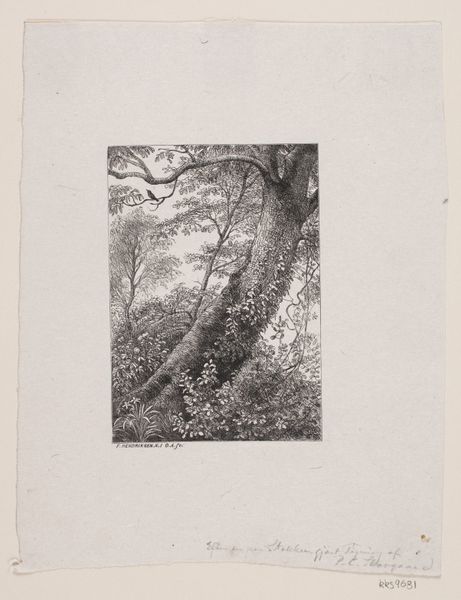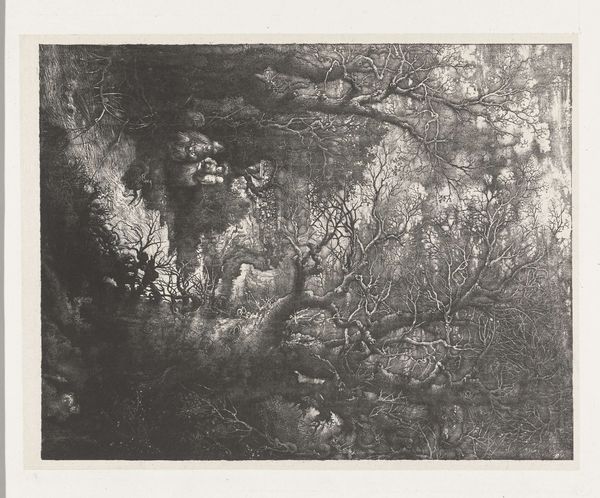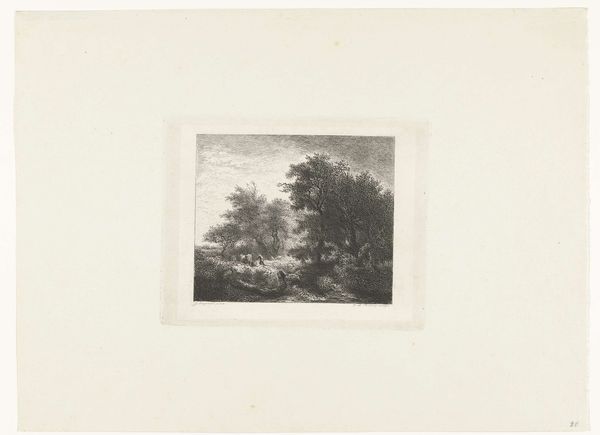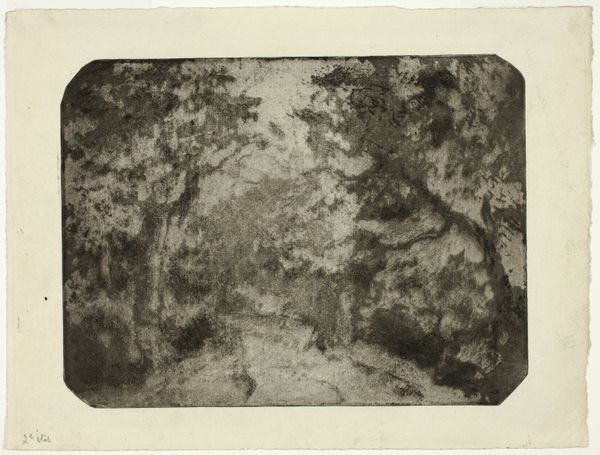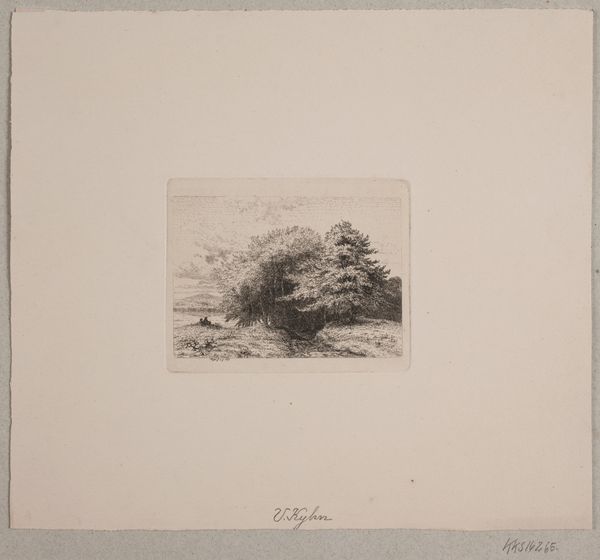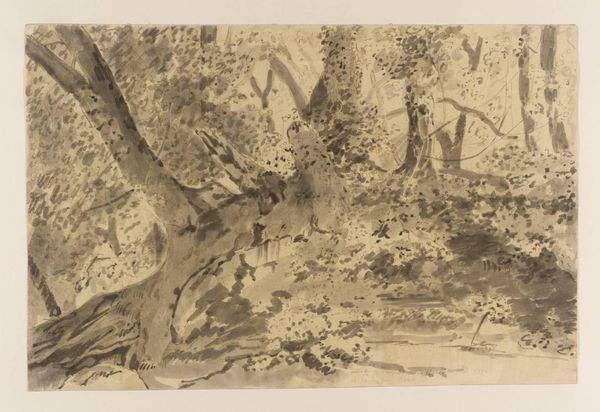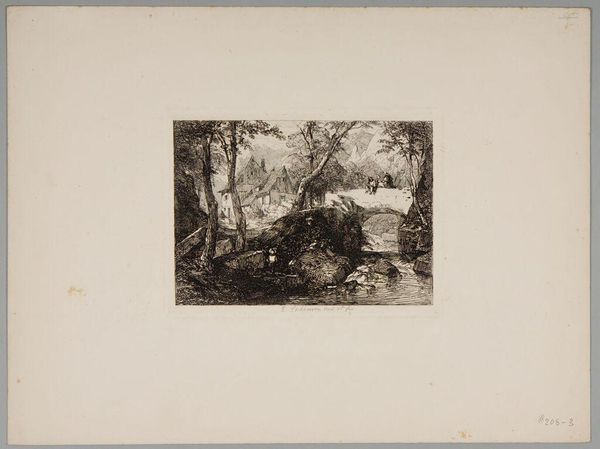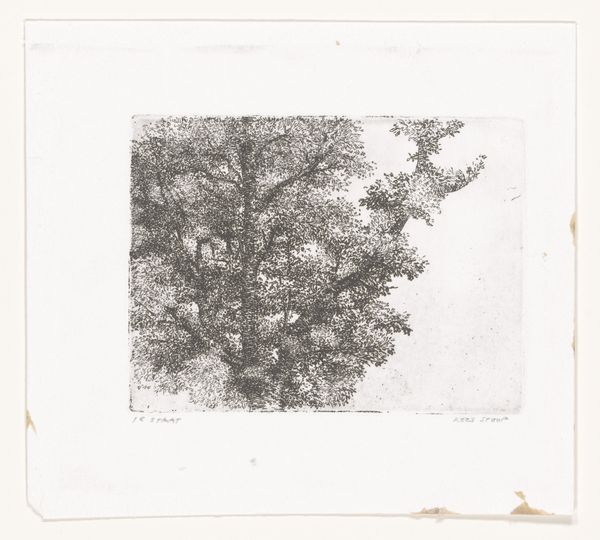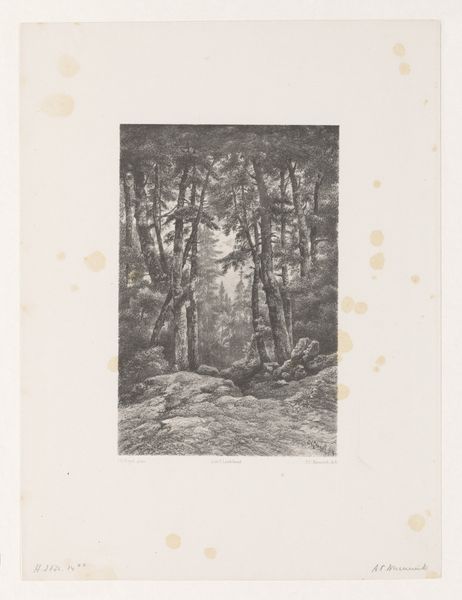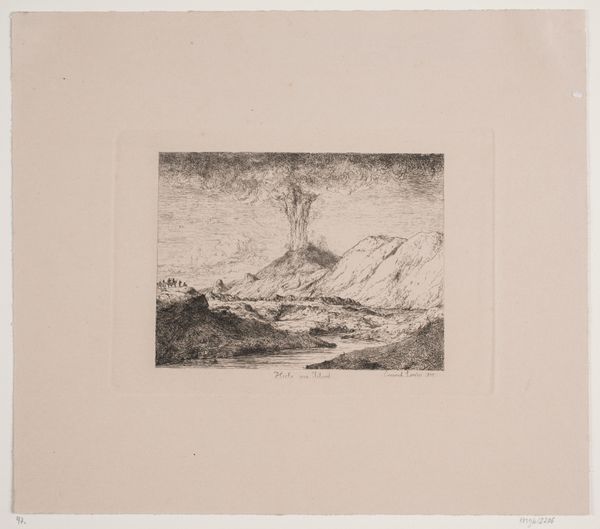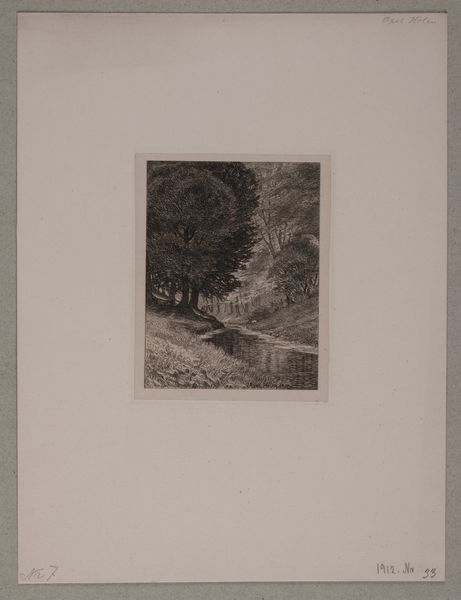
drawing, print, etching, paper
#
drawing
# print
#
impressionism
#
etching
#
landscape
#
paper
#
france
Dimensions: 215 × 230 mm (image/plate); 278 × 376 mm (sheet)
Copyright: Public Domain
Curator: This etching by Félix Bracquemond is titled "Le Chemin de Coutures, à Sèvres," and it dates back to 1871. Editor: It's brooding, isn’t it? The stark contrast, almost violent in its shades. A kind of monochrome theatre. Curator: Bracquemond, deeply associated with the Impressionist movement, dedicated himself to printmaking, pushing its boundaries with pieces like this one. The composition is a pathway leading into darkness, right? The interplay of light and shadow creates an atmospheric intensity. Editor: And it does something unsettling, doesn’t it? The almost total absence of color amplifies a certain weight… France, 1871. After the Franco-Prussian War, the Paris Commune... This isn’t just a landscape, but an emotional geography, maybe? An allegory of national trauma perhaps. Curator: Perhaps you're right! He was often drawn to seemingly ordinary subjects, rendering them extraordinary through his technique, particularly his innovative use of etching. There’s this remarkable detail... almost scientific in the way he captured plant forms... But the darkness sort of undermines scientific objectivity! Editor: Absolutely. This piece isn't a passive observation; it’s an active engagement with the complexities of the time. The shadows, for instance, conceal and distort, echoing the social anxieties bubbling under the surface. Curator: There is such a haunting quality. A feeling of the past lurking in the present. Bracquemond was truly capturing the mood of the era, translating into graphic form this profound unease... he makes one feel a tangible disquiet! Editor: It makes one consider who and what this idealized landscape excludes. Whose story does it fail to reflect. It is this act of exclusion that really conveys trauma. It leaves you questioning the dominant narrative, right? Who gets to stroll down a leafy lane after such great devastation? Curator: Beautifully said. It's pieces like this that blur the lines between personal expression and political statement. The darkness gives us a lot to think about! Editor: Indeed. It leaves you with a kind of aesthetic aftershock that persists even after you've walked away.
Comments
No comments
Be the first to comment and join the conversation on the ultimate creative platform.
